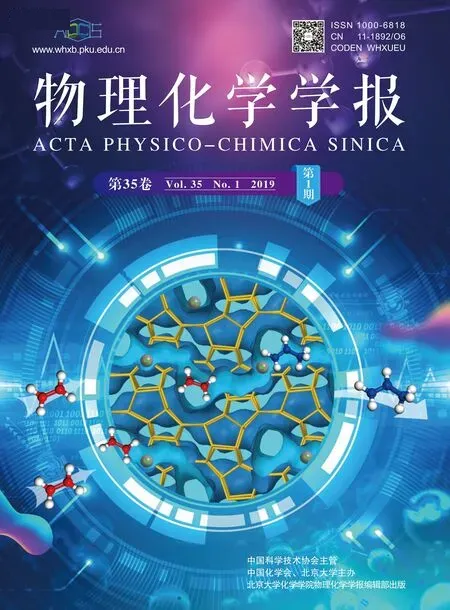Rapid Assessment of Atoms-in-Molecules Charges for Polypeptides by the Electronegativity Equalization Method
OUYANG Yongzhong , HUA Shugui , DENG Jinlian
1 School of Environmental and Chemical Engineering, Foshan University, Foshan 528000, Guangdong Province, P. R. China.
2 College of Life Science and Chemistry, Jiangsu Key Laboratory of Biological Functional Molecules, Jiangsu Second Normal University, Nanjing 210013, P. R. China.
Abstract: Atomic charges play a crucial role in the understanding and modeling of the chemical behavior of proteins. Fast assessment of atomic charge distributions in larger molecules can be performed by implementing the electronegativity equalization method (EEM). To further improve the accuracy of the EEM approach, a novel and efficient method based on Bader’s concept of high degree fragment transferability of atomic charges has been proposed for the parameterization of atoms-in-molecules (AIM) charges of polypeptides or proteins. The EEM parameterization method considers both the factors of connectivity and hybridized states, and the effect of the local chemical environment in fragments or groups. The types of atoms were defined on the basis of the local chemical environments of the fragments or functional groups of these atoms. The fragment transferability feature of QTAIM indicates that the atomic properties for the contributing atoms can be reproduced if the chemical environment is comparable. The constituent fragments or functional groups of macromolecules such as polypeptides and proteins can be utilized as building blocks for the additive generation of their electronic densities. The main peptide group(NH―HαCα―C=O) of the polypeptide in the backbone was used as a building block to model the EEM parameters for reproducing the atomic charges in the polypeptides. A training set of 20 terminally blocked amino acids (Ac-X-NHMe, X =any neutral residue), which recreated the immediate local environment of the main chain fragments or functional groups of the polypeptides, were chosen for the calibration of AIM charges using the differential evolution (DE) algorithm. The effects of the optimized methods on the results were discussed and it was found that the DE algorithm showed a better performance for the objective function. The quality of the AIM charges obtained from the EEM method presented in this study was evaluated by comparison with those obtained from B3LYP/6-31G+(d,p) calculations for the two test tetrapeptides not contained in the training set. It was found that a remarkable improvement was achieved using the EEM model developed in this study as compared to the previous studies. The introduction of Bader’s high fragment charge transfer model into the EEM provided a new scheme for its calibration and parameterization for larger systems such as polypeptides or polynucleotides, which possess highly repetitive segments. Among all types of atomic charges, only the AIM charges showed a significant meaning in experiments and could be obtained by X-ray diffraction experiments. Rapidly reproducing the accurate AIM charge for large systems seems to be more meaningful, especially for the prediction of protein-protein,protein-DNA, and drug-receptor recognition and interactions.
Key Words: Atomic charges; Electronegativity equalization method; AIM charges; Fragment transferability;Chemical environments


